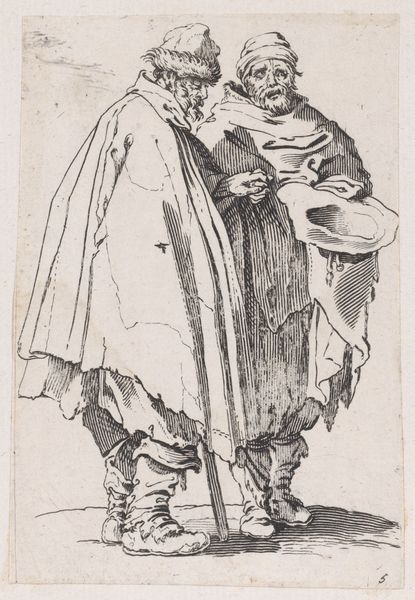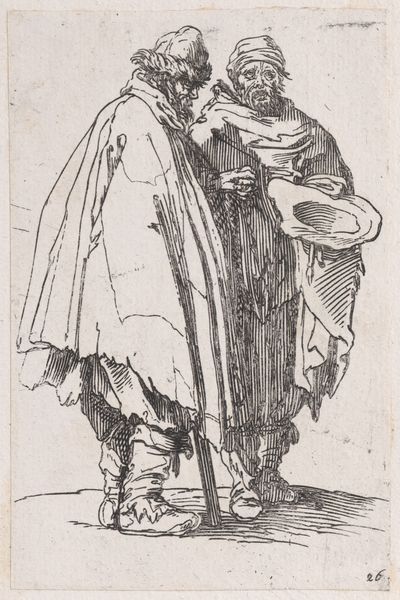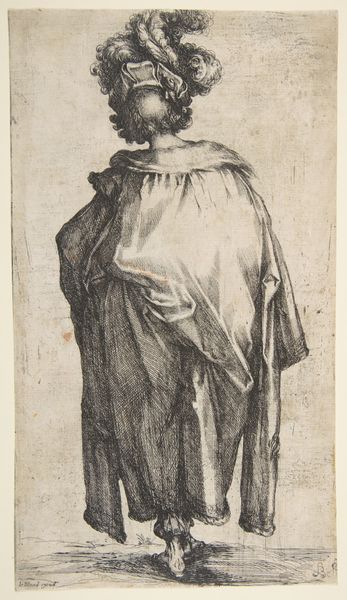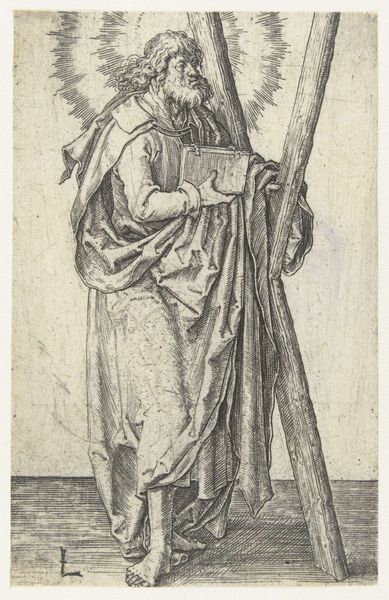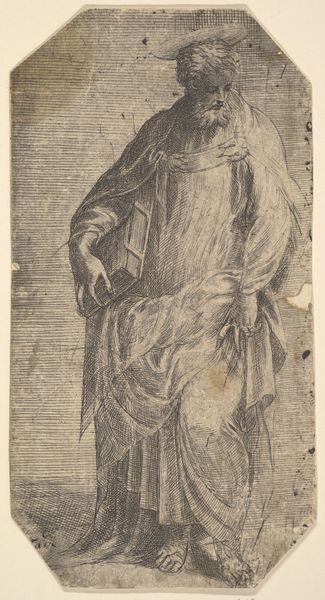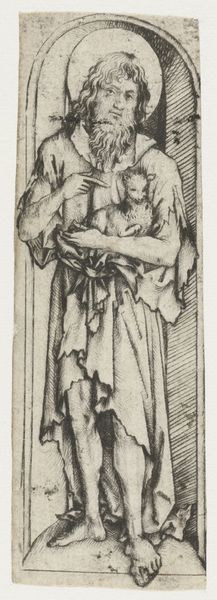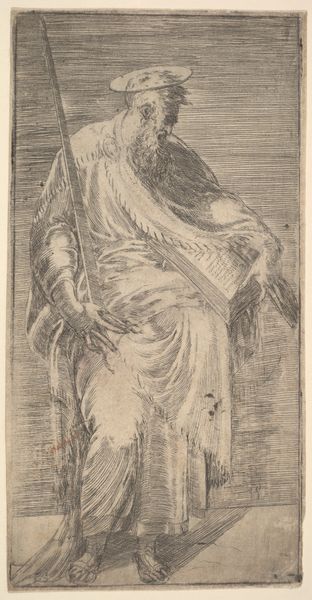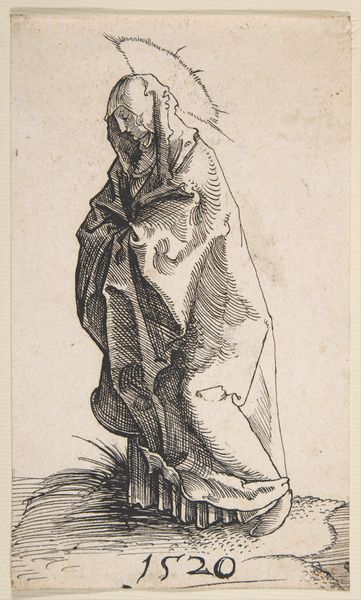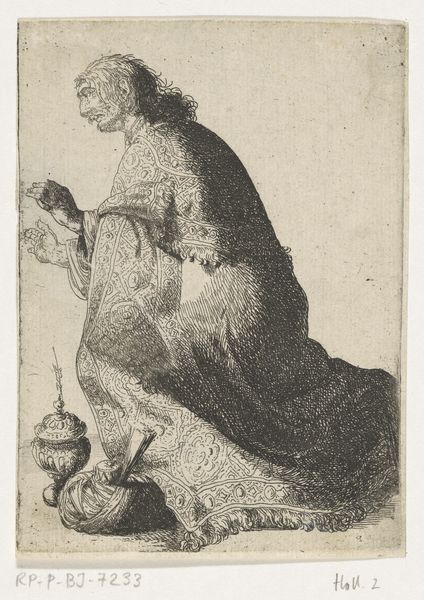
drawing, print, etching
#
portrait
#
drawing
# print
#
etching
#
mannerism
#
men
#
portrait drawing
Dimensions: Sheet (trimmed): 11 1/4 × 6 11/16 in. (28.5 × 17 cm)
Copyright: Public Domain
Curator: Oh, wow, what an incredible expression. He looks burdened, thoughtful. All those swirls in his robes—like he's wading through time itself. Editor: Today, we're exploring Jacques Bellange's "Caspar, from 'Three Magi'," created between 1595 and 1616. This etching, currently residing at The Metropolitan Museum of Art, offers a fascinating study in Mannerist style. Curator: Mannerist indeed! You can really see that exaggerated elegance, can't you? But something about this image feels, almost subversive, or maybe it’s that fur stole and ridiculous hat. How do you place it historically, looking at its social context? Editor: Well, Bellange worked during a period of immense social and religious upheaval. The opulence he depicts can be interpreted as both a celebration and a critique of wealth and power structures, Caspar, traditionally a king, appears here almost theatrical, perhaps reflective of early modern European fascination with and misrepresentation of the "Orient." The very depiction challenges, or at least, nuances traditional religious imagery. Curator: That tension is what grips me. He's both regal and slightly comical, wise and weary. I’m wondering what he thinks about, you know, away from the Bible story. What makes his heavy garments feel symbolic in a weirdly real way? Editor: In terms of artistic choices, consider the etching technique itself, the delicate lines creating such rich textures and contrasts. And think about printmaking as a medium – enabling the wider circulation of these images and ideas, beyond courtly circles. It's not just art, it’s social commentary. Curator: It becomes almost like visual poetry, I suppose. So, how has situating Caspar within broader narratives of race and identity informed how you read this piece now? Editor: Considering current conversations around representation, it allows me to really question and unpack the artist's motivations and potential biases when depicting someone perceived as 'foreign' within a religious narrative. Curator: It's never just the beautiful lines on paper, is it? It's the echoes they set off in the present, in the culture at large. It's a great reminder of the many layered facets of any artwork we explore. Editor: Yes. With just a simple etched figure, we can glimpse at worlds of social dynamics, artistic intention and endless layers of interpretation. Thank you for this reflection on a unique old master print.
Comments
No comments
Be the first to comment and join the conversation on the ultimate creative platform.
